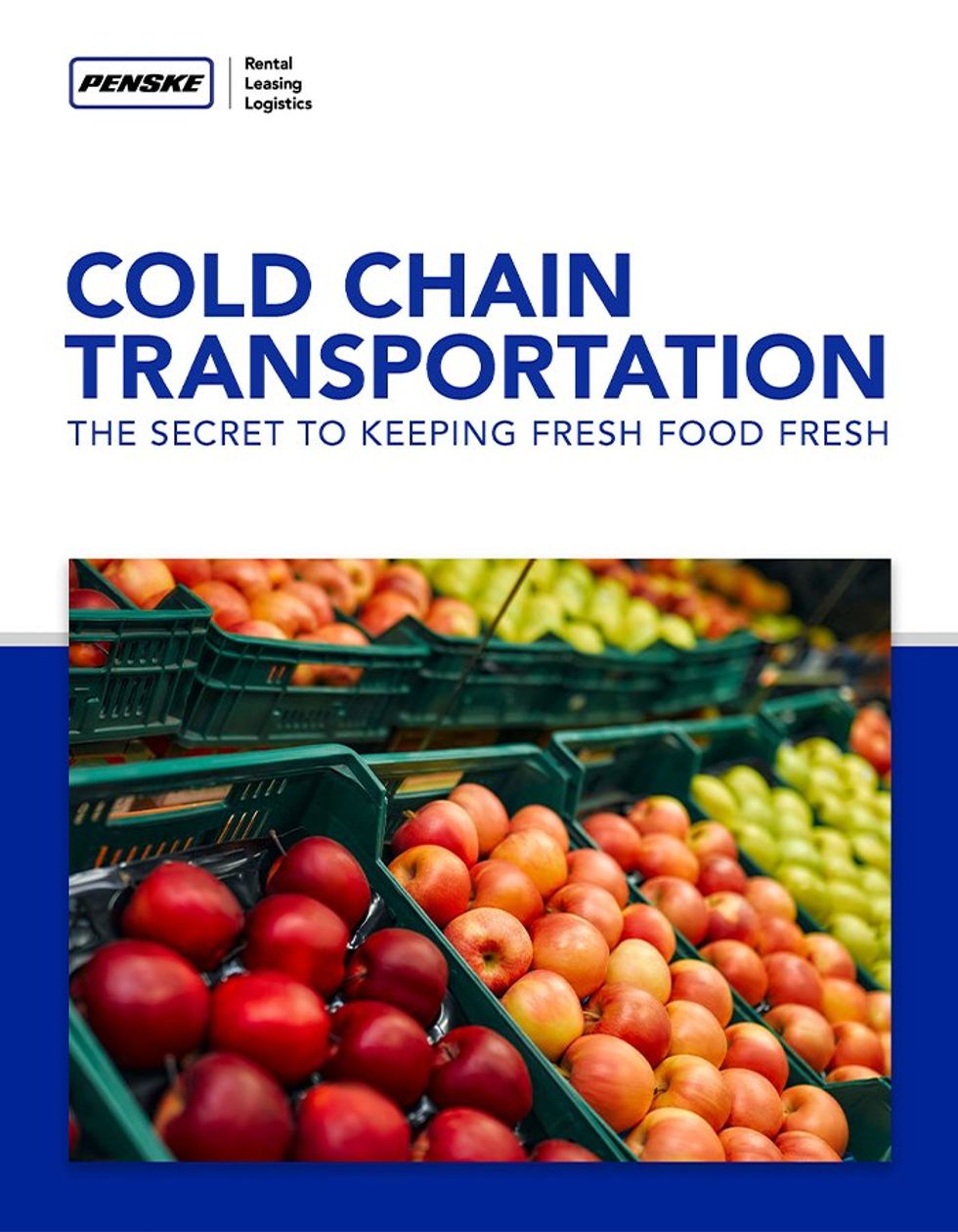
Read this valuable report on how the right people, processes and technology can work together to ensure freshness and quality
Today’s busy customers demand fresher, more interesting grab-and-go offerings from their grocers and convenience stores.
To meet this growing consumer demand, transportation providers must guarantee deliveries will be on time, with built-in flexibility to respond when volumes spike. Maintaining cold-chain integrity is vital to the safe transport of fresh foods. It helps to eliminate the incidence of food-borne illness and contamination, and provides a longer shelf life for products.
Such a delicate dance of getting fresh foods where they need to go, when they need to get there and under the perfect conditions may seem daunting, but a solution exists. Achieving near-perfect efficiency "is all about process, procedure and reliability," says Kandice Nadeau, Vice President of Dedicated Contract Carriage for Penske Logistics. "Leveraging the right level of technology is key to creating efficiencies."
This free white paper will walk you through numerous steps and ideas that can help you keep fresh food fresh, including:
- Creating separate supply chains – Some companies create rapid-replenishment distribution channels for grab-and-go items that need frequent restocking, such as premade sandwiches and salad cups. Another option: using smaller refrigerated trucks to speed deliveries.
- Maintaining food safety – The Food Safety Modernization Act (FSMA) of 2011 further protects the integrity of fresh products. To meet FSMA regulations, transportation equipment must be designed and manufactured properly. It's also important to implement adequate temperature controls and separate food from non-food items in the same load.
- Ensuring the integrity of perishables – Even small deviations for short periods of time can impact freshness depending on the product. For example, cauliflower is very prone to compromise with just a short, slight temperature fluctuation, while cantaloupe is not as susceptible, with a tolerance range of 25 degrees F. Apples stay crisp and tasty for 240 days, but raspberries are only good for two-to-three days.
- Meeting the challenges of produce delivery – The natural deterioration of fruits and vegetables generates heat and makes keeping a stable temperature even trickier.
- Extending the shelf life of meats – Both temperature and moisture affect the growth of bacteria and microorganisms. Proper temperature and humidity levels can lengthen the shelf life of meat by 25 days as compared to traditional approaches.
- Leveraging technological innovation – The continuing evolution of data loggers, Timestrips® and RFIDs are critical to providing real-time temperature and humidity data. Active monitoring technology can adjust the temperature if there is a fluctuation, while bar-code inventory tracking systems can pinpoint perishables down to the item level.
- Using the right trailer – Properly insulated containers maintain freshness. So too does ensuring proper airflow throughout the trailer with the strategic use of bulkheads, chutes and venting.

Kandice Nadeau is vice president of dedicated contract carriage (DCC) for Penske Logistics. Prior to this role, she was the director of DCC development. Nadeau has more than 18 years of experience in the transportation industry, serving as a product line manager, senior project manager, and senior logistics engineer. A six-sigma green belt and Certified Supply Chain Professional (CSCP), Nadeau earned a bachelor’s degree in business administration from The Ohio State University, focusing on logistics, transportation, and marketing.
DISCLAIMER: The content provided is for general informational purposes only. Penske makes every effort to ensure the accuracy of the information presented; however, the information herein is provided without any warranty whatsoever, whether express, implied or statutory. In no event shall Penske be liable for (i) any direct, incidental, consequential, or indirect damages (including loss profits) arising out of the use of the information presented, even if Penske has been advised of the possibility of such damage, or (ii) any claim attributable to errors, omissions, or other inaccuracies in connection with the information presented.


